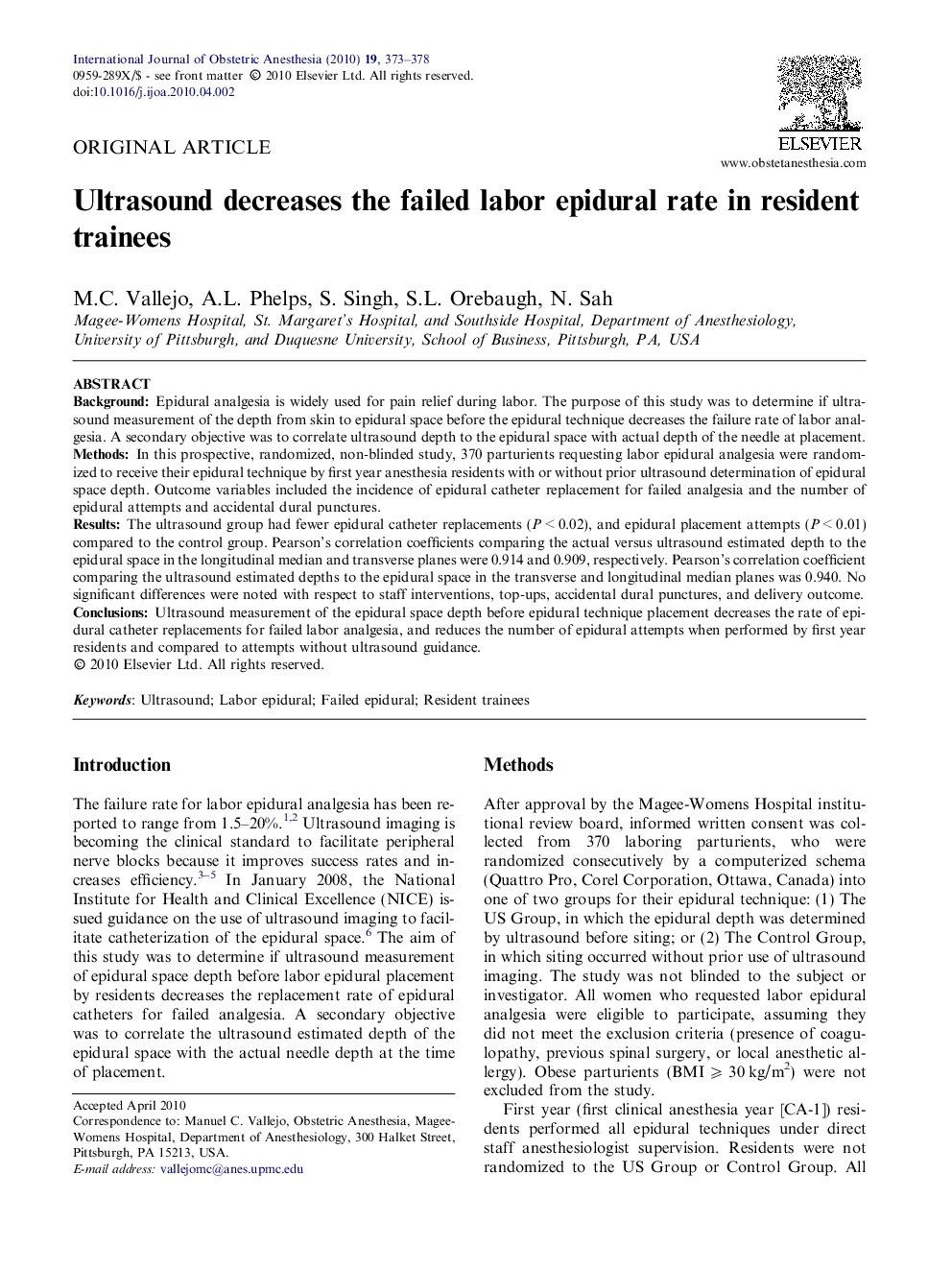| Article ID | Journal | Published Year | Pages | File Type |
|---|---|---|---|---|
| 2758238 | International Journal of Obstetric Anesthesia | 2010 | 6 Pages |
BackgroundEpidural analgesia is widely used for pain relief during labor. The purpose of this study was to determine if ultrasound measurement of the depth from skin to epidural space before the epidural technique decreases the failure rate of labor analgesia. A secondary objective was to correlate ultrasound depth to the epidural space with actual depth of the needle at placement.MethodsIn this prospective, randomized, non-blinded study, 370 parturients requesting labor epidural analgesia were randomized to receive their epidural technique by first year anesthesia residents with or without prior ultrasound determination of epidural space depth. Outcome variables included the incidence of epidural catheter replacement for failed analgesia and the number of epidural attempts and accidental dural punctures.ResultsThe ultrasound group had fewer epidural catheter replacements (P < 0.02), and epidural placement attempts (P < 0.01) compared to the control group. Pearson’s correlation coefficients comparing the actual versus ultrasound estimated depth to the epidural space in the longitudinal median and transverse planes were 0.914 and 0.909, respectively. Pearson’s correlation coefficient comparing the ultrasound estimated depths to the epidural space in the transverse and longitudinal median planes was 0.940. No significant differences were noted with respect to staff interventions, top-ups, accidental dural punctures, and delivery outcome.ConclusionsUltrasound measurement of the epidural space depth before epidural technique placement decreases the rate of epidural catheter replacements for failed labor analgesia, and reduces the number of epidural attempts when performed by first year residents and compared to attempts without ultrasound guidance.
